List of Authors
>>About this blog
Recent blog post
|
[Satoken]
July 17, 2018 18:00
I went to the Catholic Tsukiji Church in the sweltering heat. The purpose is to visit the Japanese language volunteer class. I knew it because it was familiar with the text of the sightseeing test, but this is the first time I went there. As the text suggests, there is a doria-style gabled sculpture of "roses and tulips" on the gable wall. It's an image of stone, but it's a wooden building. In the past, there were many foreign settlements, so there were many things that could be done for the first time in Japan and the birthplace of schools. Ginza and Tsukiji are close, but it is an area where you can feel a foreign country somehow with a calm atmosphere.
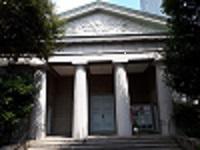 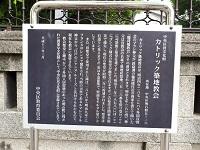
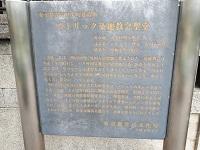 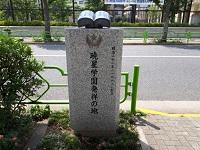
[Hanes]
July 17, 2018 12:00
Hello. This is a new correspondent, Hanes. 
Recently, hot days exceeding 35 degrees have been continuing.
I'm worried about heat stroke, but when it gets hot, some people may feel better that summer has finally come . .
In such summer, many summer festivals and Bon Dance Festivals are also held in Chuo-ku.
This time, we will tell you about the summer event information you want to keep in advance!
■The 41st Sumida River Fireworks Festival
Date and time: Saturday, July 28, 2018 19:00-20:30
Venue: 1st Venue Sakurabashi Downstream-Kototoi Bridge, 2nd Venue Komagata Bridge downstream-Umaya Bridge upstream
The venue is not Chuo-ku, but you can also enjoy fireworks from within the city.
In particular, the Sumida River Terrace from Hamacho Park to Ryogoku Bridge is also known as a secret place.
It is a recommended spot for those who want to enjoy fireworks while avoiding congestion.
■The 71st Tsukiji Honganji Noryo Bon Dance Festival
Date and time: August 1 (Wednesday)-August 4 (Saturday) 2018
August 1-3 from 19:00 to 21:00, August 4 from 18:00 to 20:30
Venue: Tsukiji Honganji
Official website: The 71st Tsukiji Honganji Noryo Bon Dance Festival held
This event has been selected as one of the Eight Night Views of Chuo-ku, and is worth a look.
The performances of Oedo Sukeroku Taiko and the costumes danced as characters are gaining popularity.
The appearance of a mock shop of famous store associations in Tsukiji Outer Market.
It is exactly the best Bon Odori in Japan.
■Holiday Promenade "Yukata de silver"
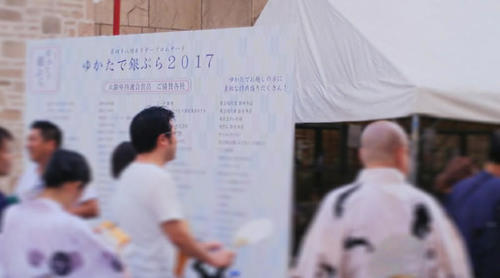
Date and time: eve festival Saturday, August 4, 2018 17:00-20:00
Main Festival Sunday, August 5, 2018 15: 00-17: 00 (Bon Odori venue is from 12:00 to 17:00).
Venue: Ginza Street, Yasuaki Elementary School, each commercial facility, each store
Official website: Silver in a yukata
It is said that there is also a great benefit if you wear a yukata, so you can enjoy it.
If you don't have a chance to wear a yukata , it's a great opportunity to wear a yukata. , it's a great opportunity to wear a yukata.
■The 29th Oedo Festival Bon Dance Festival in Chuo-ku
August 24 (Fri) and 25 (Sat), 2018 16: 00-21: 00
Venue: Hamacho Park
Reference site: Chuo-ku government office "the 29th Chuo-ku Oedo Festival Bon Odori Tournament"
In this event, not only will Chuo-ku's original song "This is Edo no Bon Dance" (written by Toyohisa Araki and composed by Shosuke Ichikawa) flow, but also will be played.
In order to foster a spirit for the Tokyo 2020 Games from this year, the remake version of "Tokyo Olympics Ondo" (produced in 1963) "Tokyo Olympics Ondo-2020-" will be added to the song.
Why don't you dance the modern version of the "Tokyo Olympics Ondo" at this event, a little different from the past?
■Eight Views of Night Views of Chuo-ku
When you go out at night for events, etc., check out other spots in the Hakkei of Chuo-ku Night Views.
Light-up of Eitai Bridge
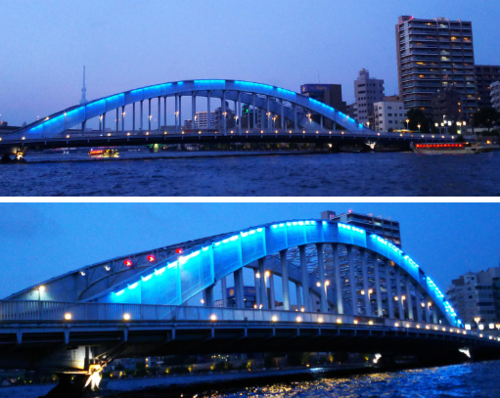
Light-up of Kachidokibashi
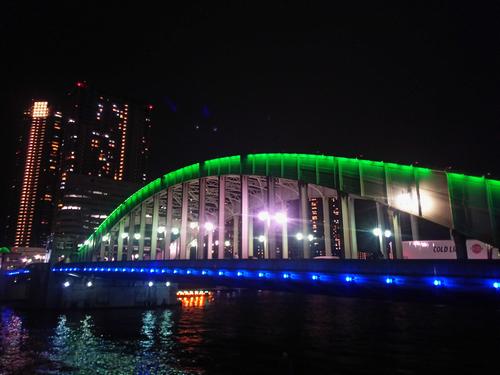
Please enjoy the summer tradition unique to Chuo-ku and make wonderful summer memories.
[Shitamachi Tom]
July 17, 2018 09:00
There are various events in each region in Chuo-ku.
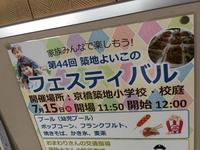 I think that festivals held at many shrines and various events held by Chuo-ku and related organizations are popular with many people. I think that festivals held at many shrines and various events held by Chuo-ku and related organizations are popular with many people.
On the other hand, there are places in each town where town associations and residents' associations play a central role in holding their own events. Because it is something that can not be done without the connection of the community, it can be said that it can be said to be one of the proofs of the regional power of Chuo-ku.
Most of the events organized by the town council can be easily participated, so if you have an event you are worried about, or if you see it by passing, please take a look once.
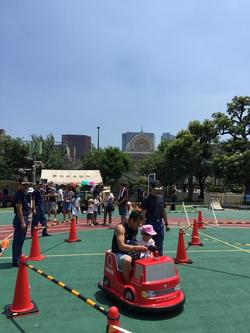
On July 15 (Sun), a local event "Tsukiji Yoshikono Festival" hosted by Tsukiji Town Residents' Association was held at Kyobashi Tsukiji Elementary School. . This is an annual event that has already been counted 44 times. I've heard that many children are looking forward to this day. The children who participated will be presented with souvenirs without exception. The heat was growing, and shaved ice was distributed at the food corner.
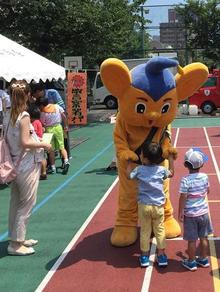
Police and fire departments provided advice and traffic guidance to children celebrating summer vacation, and residents' association officers set up a food corner and a fair corner to enliven the atmosphere. The cheers of the children echoed.
Although it was under the hot sun on a hot day, it was a very meaningful day as a place for many people to interact. It is scheduled to be held again next year. Please come by all means. I'll be waiting for you.
[wienerhorn]
July 16, 2018 09:00
Kachidokibashi is a bridge that spans the Sumida River and connects Tsukiji and Kachidoki. It was completed in 1940 as a means of transportation instead of "Kachidoki's handover". It has a structure in which the central part jumps up so as not to hinder the navigation of the ship, and was called "the best movable bridge in the East". The name "Kachidoki" was given to commemorate the fall of Port Arthur in the Russo-Japanese War. Opening and closing was suspended at the end of 1970 due to the disappearance of large vessels and increased traffic volume.
I've watched the movie "Kachidokibashi" about this Kachidokibashi. This movie is not a so-called entertainment movie, but a documentary film (planned by Tokyo, produced by the Japan Society of Civil Engineers and the Civil Engineering Technology Video Committee). The details of the comparison of the shape of the bridge, the mechanism of jumping up, etc. were explained in detail. The video that became the source of this movie is a 5-36-second silent movie planned and produced by the Civil Engineering and Culture Film Committee of the Japan Society of Civil Engineers in 1940.
Recently, "infrastructure tourism" has come to the spotlight. I felt that the fact that valuable video materials like this are left for the infrastructure that supports our lives close to us could attract more social attention.
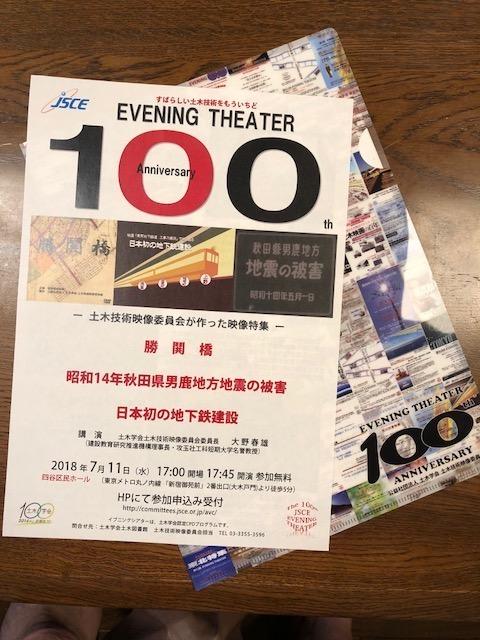
[Dimini ☆ Cricket]
July 15, 2018 09:00
Following Okinawa and Kanto, Kinki also  has the end of the rainy season, and this year is the season when this flower blooms. has the end of the rainy season, and this year is the season when this flower blooms.
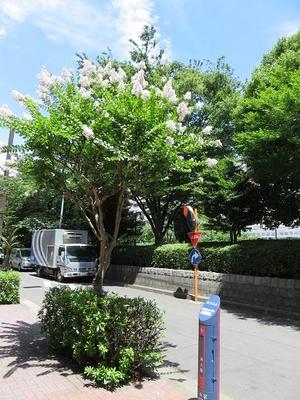
It's a summer flower, Salsberg flower, Salsberg
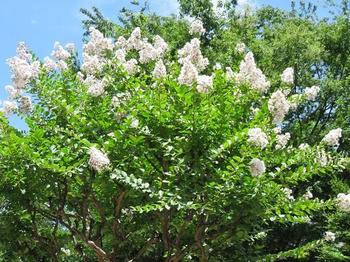
I don't usually be aware of the existence of this flowering tree, but in summer it keeps pink and white flowers blooming all the time, so there is a real presence during that period. it keeps pink and white flowers blooming all the time, so there is a real presence during that period.
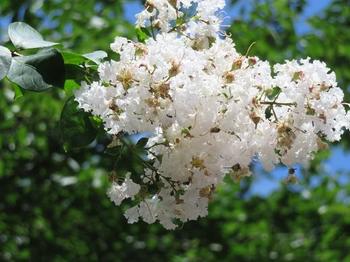
Small flowers with shrunk petals are gathered together and blooming like ears.
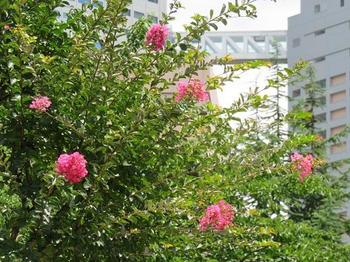
Around my place of work, trees that bloom pink and white flowers are planted alternately around Tsukiji River Park.
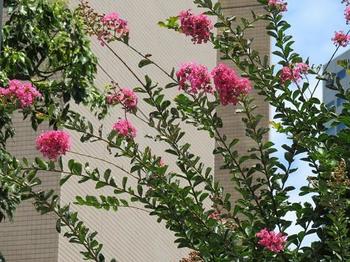
What happened this year, it seems that the white flowers are already in full bloom, but the pink ones are late.
I don't know if this is only around Tsukiji River Park or if the other is the same. 
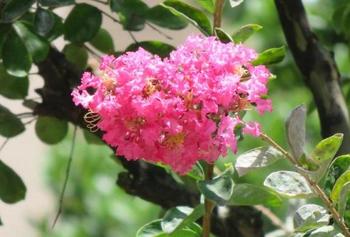
By the way, as of May 8, 2017, there are 35 types of street trees managed by Chuo-ku, 6,816 trees, of which 356 are salsberg.
There are quite a few.
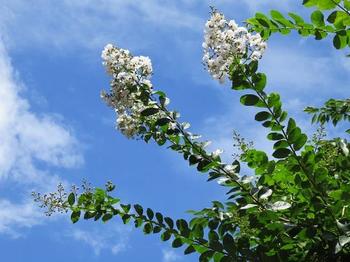
In any case, Salsberg is a flower tree that represents summer . . 
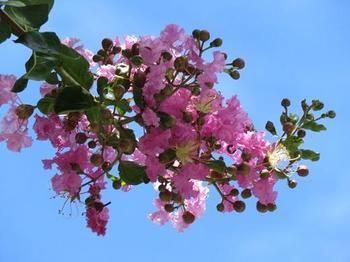
Last year, here is a blog post introducing Salsberg around Tsukiji River Park. ⇒
/archive/2017/07/post-4479.html
     
[Asunaro]
July 13, 2018 12:00
"Jodo Shinshu Honganji School Honganji Tsukiji Betsuin"
It was built in Yokoyamacho near Asakusa in 1617, but was burned down by the great fire of the Meiryaku era.
Reclaimed and rebuilt the sea off Hatchobori. It came to be called "Tsukiji Gobo".
After that, the shaven was burned down by the Great Kanto Earthquake and was designed by Dr. Chuta Ito.
In 1934, the current main hall was completed.
The exterior of main hall is made of stone in ancient Indian style (Tianzhu style).
Dr. Chuta Ito himself
"I love ghosts, what causality is, sexually, and ghosts."
As you say, Tsukiji Honganji has a number of mysterious animal designs.
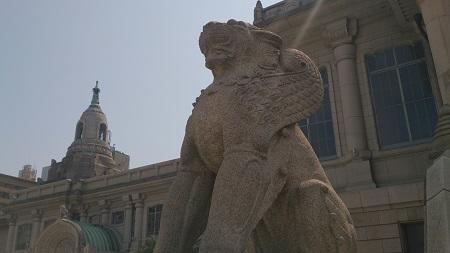
<Calra of komainu>
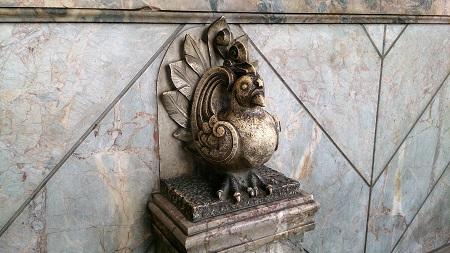
<Peacock of Three Livestocks>
In Tsukiji Honganji Temple, there are other eccentric animals and youkai.
Why don't you explore the temple?
◆Tsukiji Honganji
3-15-1, Tsukiji, Chuo-ku, Tokyo
|
Links
|






















